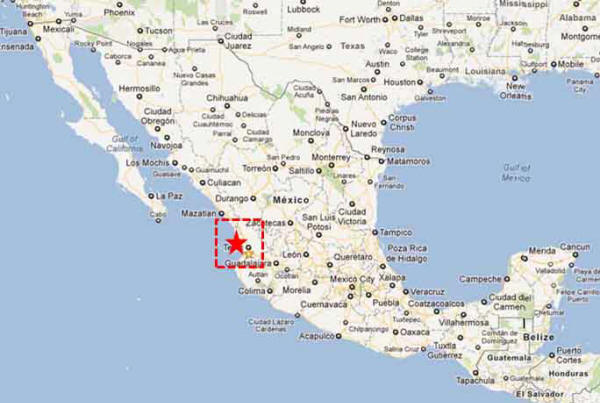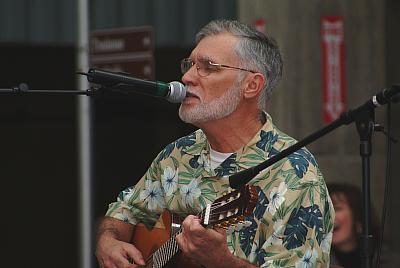Being bilingual is a true gift.
I have an aunt on my mom's side (Lourdes) who was born in San Blas, Nayarit, México. So every Christmas season, we'd have tamales and sing posadas and drink ponche with her side of the family. I certainly loved those times, but I'm not sure what Spanish, if any, I really learned there.
I started studying Spanish in high school. Freshman year at Santana, Sra. Verrati (strange twist of fate: late in her career, she transferred to the school where I ended up teaching Spanish, and we shared an office space!). I took to Spanish right away. Turns out I have an ear for it. I have an ear for everything...I can pick out a tune on the piano after hearing it, I can whistle really well (I got THAT from my dad), I do accents, I accidentally parrot people I'm speaking with if they have an accent...I even learned phrases in Japanese from an exchange student, and in Chinese from some Taiwanese businessmen I drove around in college. All that to say, learning a language turned out to be pretty easy for me.
My second year, I had Sra. Nissenbaum. Third year was Sra. Jack, as was AP Spanish my senior year. My two biggest memories are: 1) playing the role of Sebastian in our Spanish version of Little Mermaid. I sang a rousing rendition of "Bajo el Mar"...it brought the house down every time! And 2) I had a bet with a classmate that we would incorporate the word albaricoque (apricot) into the oral portion of the AP test no matter what. Well, I'm pretty sure that's the reason I got a 4 instead of a 5 (like it matters...AP tests are a scam and bad for kids; I dare you to get me started on that rant sometime).
When I went away to college, I knew one thing above all else: I was destined to be a teacher. At Baker University, I applied for the departmental scholarships in Spanish and History (my other love, evidenced in Context being my #1 Strengthsfinder theme). I won the Spanish scholarship, and that decided my future for me!
I always got a kick telling people that I left San Diego (right on the border with Tijuana) to go study Spanish in the middle-of-nowhere Kansas. At first blush, that sounds crazy. But the fact is, I ended up in really small classes (an environment in which I thrive). And in my upper-division courses, there were only TWO students! Angie Williams and I both received a top-notch education from our Cuban-born author/poet/singer/professor, Pablo La Rosa. He was great...the type of professor who would call me on a snow day to cancel class. The type of professor who moonlighted as a beer vendor at the Royals games. He was a lot of fun. And he helped me understand how lyrical a Romance language needed to be!
So then I ended up teaching Spanish. At my rival high school back in my hometown! I was there for 17 years. I dabbled in other things: I taught AVID, I was the yearbook advisor for 7 years...but teaching FIRST YEAR Spanish became my specialty. For one thing, all my colleagues hated teaching freshmen. Me...I loved it!
My primary mission as a first-year Spanish teacher was to help the students fall in love with Spanish. We sang songs, we played games, we grilled carne asada on the back patio...I knew that if I could get them to enjoy Spanish, they'd work of their own accord.
Late in my teaching career, I became an English Learners' Coordinator and started working on my admin credential. In both of those roles, I expanded my horizons as a community liaison, helping to meet the needs of Spanish-speaking parents as they engaged with the school. Little did I know what I was preparing myself for!
Today, I work at Abraham Lincoln Middle School in Selma, California (in the Central Valley south of Fresno). I am a Program Manager, so I continue to work with English Learners, but also with Title I programs. I use Spanish EVERY. SINGLE. DAY. With kids. With parents. With staff. As I translate materials (I'll tweet out our latest bilingual newsletter tomorrow!). As I help fix bad translations of existing materials (yikes!). As I banter with a mom who came to the office to sell her handmade tamales. As I hear from our parents about their dreams for their kids. In ELAC meetings. In SSC meetings. At football games.
And in my personal life, too. Helping strangers in Target who can't get their needs across. Surprising an occasional Uber rider who was struggling with their English. Getting the waiter to hook me up with an extra filet of the jalapeño-cream-covered tilapia because we connect. Understanding the meanings of weird words because the Latin root is similar to the Spanish, adding a layer to my grip on a Bible verse. Getting to enjoy awesome music (Julieta Venegas, for instance). And so on...
I didn't expect all of this to flow out of me tonight. But I am full of gratitude for the gift of language. I know I didn't earn it. I didn't work for it...it just came to me. And I'm so glad. Doy gracias a Dios por haberme bendecido. Mi vida es más rica por poder entender dos idiomas.




